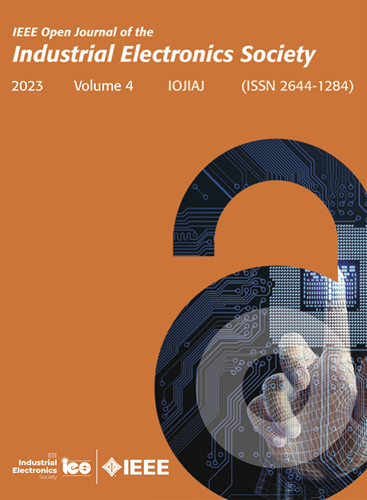宽电压增益范围混合调制LCC谐振变换器的半同步整流方案
IF 7.2
1区 工程技术
Q1 AUTOMATION & CONTROL SYSTEMS
引用次数: 0
摘要
二次侧移相控制是提高脉冲调频谐振变换器增益范围的有效方法。然而,SSPSC不仅在二次侧半有源电桥中通过mosfet产生大的循环电流,而且使这些mosfet在硬开关下工作,从而降低了效率。针对这些问题,本文提出了一种半同步整流(S-SR)方案,并在采用SSPSC和PFM的LCC谐振变换器上实现了该方案(SSPS-PFM LCC)。该方案不与SSPSC发生冲突,避免了循环电流流过二次侧mosfet体二极管,实现了这些mosfet的ZVS导通,从而提高了效率。首先,提出了S-SR的概念。其次,建立了SSPS-PFM LCC的时域状态轨迹模型。根据该模型,推导了S-SR导通角与开关频率(SF)和二次侧相移角(SSPSA)的数学关系,并设计了S-SR导通角的简单计算方法。这使得S-SR方案的实现不需要额外的传感器,几乎没有额外的控制器计算负担。最后,建立了一个SSPS-PFM LCC原型来验证所提出的S-SR方案的有效性。本文章由计算机程序翻译,如有差异,请以英文原文为准。
Semisynchronous Rectification Scheme for Hybrid Modulated LCC Resonant Converter With Wide Voltage Gain Range
Secondary-side phase-shift-control (SSPSC) is an effective method to widen the gain range of resonant converter with pulse frequency modulation (PFM). However, SSPSC not only induces a large circulating current through MOSFETs in secondary side semiactive bridge but also makes these MOSFETs operate under hard switching, thereby diminishing efficiency. To address these issues in this article, a semisynchronous rectification (S-SR) scheme is proposed, and it is realized on LCC resonant converter with SSPSC and PFM (SSPS-PFM LCC). This scheme will not conflict with SSPSC, can avoid circulating current flowing through body diodes of secondary side MOSFETs, and realize ZVS turn-on of these MOSFETs, thus improving efficiency. First, the concept of S-SR is proposed. Second, a time-domain state trajectory model of SSPS-PFM LCC is built. According to this model, the mathematical relation of S-SR conduction angle with switching frequency (SF) and secondary-side phase shift angle (SSPSA) is derived, and a simple calculation method of S-SR conduction angle is designed. This enables the realization of S-SR scheme with no additional sensors and almost no additional controller computational burden. Finally, a SSPS-PFM LCC prototype is built to verify the effectiveness of the proposed S-SR scheme.
求助全文
通过发布文献求助,成功后即可免费获取论文全文。
去求助
来源期刊

IEEE Transactions on Industrial Electronics
工程技术-工程:电子与电气
CiteScore
16.80
自引率
9.10%
发文量
1396
审稿时长
6.3 months
期刊介绍:
Journal Name: IEEE Transactions on Industrial Electronics
Publication Frequency: Monthly
Scope:
The scope of IEEE Transactions on Industrial Electronics encompasses the following areas:
Applications of electronics, controls, and communications in industrial and manufacturing systems and processes.
Power electronics and drive control techniques.
System control and signal processing.
Fault detection and diagnosis.
Power systems.
Instrumentation, measurement, and testing.
Modeling and simulation.
Motion control.
Robotics.
Sensors and actuators.
Implementation of neural networks, fuzzy logic, and artificial intelligence in industrial systems.
Factory automation.
Communication and computer networks.
 求助内容:
求助内容: 应助结果提醒方式:
应助结果提醒方式:


